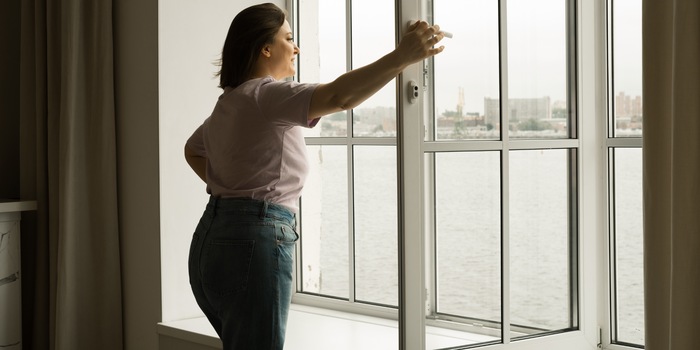
Bad air in the cosy home
The atmosphere is not equally polluted everywhere. Breathing indoors is often unhealthier.
We're not actually in a bad position when it comes to air quality. We hear about smog in distant megacities in India and China, but electric cars will soon be sparing us from exhaust fumes on our doorstep. Only rarely are we told to stay at home and close all the windows because of a chemical accident. If the air outside really is thick, we still experience our home as the last ecological refuge, a safe haven in the midst of a globally threatened environment.
But not everywhere is staying indoors healthier than outdoors. Billions of people spend a lifetime preparing their food over an open fire within their own four walls and involuntarily inhale the rising combustion residues. All in all, the World Health Organisation estimates that indoor air caused more than three million deaths in 2020 - almost as many as the bad air outdoors.
What to do about this insidious scourge of humanity? First of all, collect data, warns Christopher J. M. Whitty, the British Chief Medical Officer for England, who is something like the chief medical officer and government adviser. Together with Alastair C. Lewis, Professor of Atmospheric Chemistry at the University of York, and Deborah Jenkins, advisor at the British Department of Health, he has outlined a research programme and possible measures.
In affluent countries such as England or Germany, coal is hardly ever used for heating, but firewood has become fashionable in recent decades - and with it the pollution caused by particulate matter. Anyone who has spent time in the British Isles will also be familiar with gas stoves, which often imitate a flickering open fire and emit nitrogen oxides. Furniture releases chemical pollutants such as formaldehyde, and the radon in the subsoil emits radioactive radiation. All of these minor pollutants in themselves add up significantly over time. There are no binding limit values for indoor air quality.
The health problems of residents depend heavily on their income. Mould tends to spread in flats that are reasonably affordable but overcrowded and lack daylight. This is especially true if people rarely or never ventilate to save on heating costs. Last but not least, the occupants themselves pose a risk: Carbon dioxide exhaled in abundance all around can virtually take the air out of you, and the aerosols sprayed from your mouth and nose at close range transmit pathogens.
With increasing prosperity, the damage decreases. The installation of central heating systems reduces mould infestation, electric cookers eliminate the need for nitrogen oxide emissions from gas cookers, and larger homes reduce the risk of infection.
So the goal of healthy living ultimately turns out to be a question of money. The advice from scientists comes up against a tight property market where landlords have little incentive to invest in environmentally friendly renovations in the face of high demand. Such initiatives must be driven by the public sector - for example, following the example of energy-efficient refurbishment using thermal insulation, which only got off the ground thanks to legal requirements and financial support.
Refurbishing interiors would, of course, be much more complicated; not only would it have to cope with the jumble of diverse data, but also overcome the specific resistance that encroachments on privacy provoke.
This is where digitalisation may prove to be a deus ex machina: just as more and more people are walking around with smart watches that store their health data, intelligent sensors could discreetly monitor the indoor environment.
Spectrum of science
We are a partner of Spektrum der Wissenschaft and want to make well-founded information more accessible to you. Follow Spektrum der Wissenschaft if you like the articles.
[[small:]]
Cover image: Shutterstock / Raisa Kanareva
Experts from science and research report on the latest findings in their fields – competent, authentic and comprehensible.